Home> Company News> Bush Bearing Timeline: Tracing the Origins, Utilization, and Latest Innovations
- AddressToh Guan Centre, 31/F,69 Toh Guan Rd E, Singapore 608609
- Factory AddressToh Guan Centre, 31/F,69 Toh Guan Rd E, Singapore 608609
- Worktime9:00-18:00
- Phone(Working Time)0065-31591578
- Phone(Nonworking Time)0065-31591578
- Fax0065-31591339
Bush Bearing Timeline: Tracing the Origins, Utilization, and Latest Innovations
2024-07-20 10:30:31Introduction
Overview of Bush Bearings and Their Significance
Bush bearings, also known as plain bearings or sleeve bearings, are crucial components in various machinery and mechanical systems. Unlike ball bearings, which use rolling elements, bush bearings rely on a sliding motion between surfaces to reduce friction and support rotational or linear movement. These bearings are typically composed of materials such as bronze, steel, or advanced polymers, each offering unique benefits depending on the application.
The simplicity and cost-effectiveness of bush bearings make them a preferred choice in numerous industries. They are widely used in automotive systems, industrial machinery, aerospace applications, and consumer electronics. Their ability to operate under high loads and varying environmental conditions with minimal maintenance underscores their significance in modern engineering.
Importance of Understanding the History, Applications, and Innovations
Understanding the history, applications, and innovations of bush bearings is essential for several reasons:
Historical Insight: Knowing the evolution of bush bearings provides a context for their development and the technological advancements that have shaped their current designs. This historical perspective helps engineers and designers appreciate the incremental improvements that have enhanced performance and reliability over time.
Application Knowledge: Familiarity with the diverse applications of bush bearings allows for better selection and implementation in specific use cases. Different industries have unique requirements, and understanding how bush bearings are utilized across various sectors ensures optimal performance and longevity.
Innovation Awareness: Keeping abreast of the latest innovations in bush bearing technology enables businesses to adopt cutting-edge solutions that can improve efficiency, reduce maintenance costs, and extend the lifespan of their equipment. Innovations such as advanced materials, improved lubrication techniques, and enhanced design features contribute to the continuous evolution of bush bearings.
Purpose and Structure of the Timeline
The purpose of this timeline is to provide a comprehensive overview of the origins, utilization, and latest innovations in bush bearings. By tracing the historical development, examining the diverse applications, and highlighting the recent technological advancements, this timeline aims to offer a holistic understanding of bush bearings.
The structure of the timeline is organized into three main sections:
Origins and Early Development: This section covers the inception of bush bearings, key milestones in their evolution, and the initial applications that drove their development.
Utilization Across Industries: This part explores the various industries that rely on bush bearings, detailing specific applications and the reasons for their widespread adoption.
Latest Innovations and Future Trends: The final section focuses on recent technological advancements in bush bearing design and materials, as well as future trends that are likely to shape the industry.
By following this structure, readers will gain a thorough understanding of the pivotal role bush bearings play in modern engineering, their historical context, and the innovations that continue to enhance their performance and reliability.

Origins of Bush Bearings
Early History and Invention of Bush Bearings
The invention of bush bearings dates back to ancient civilizations where simple forms of bearings were used to reduce friction in various mechanical applications. The concept evolved significantly over time, particularly during the Industrial Revolution when the demand for more reliable and efficient machinery surged.
Key Milestones in the Development of Bush Bearing Technology
The development of modern bush bearings saw several key milestones that revolutionized their design and functionality:
|
Century |
Key Milestones in Bush Bearing Technology |
|
18th Century |
The use of simple bronze or wood bushings in early machinery marked the beginning of bush bearing technology. |
|
19th Century |
Introduction of precision machining techniques enabled the production of more uniform and reliable bushings. |
|
Early 20th Century |
Advancements in metallurgy led to the use of steel and bronze alloys, improving bearing durability and performance. |
|
Mid-20th Century |
Adoption of synthetic materials such as polymers expanded the application range of bush bearings, making them suitable for diverse industries. |
|
Late 20th to 21st Century |
Continuous refinement in bearing materials, lubrication techniques, and design optimization further enhanced the reliability and lifespan of bush bearings. |
Pioneering Companies and Inventors in the Field
Several pioneering companies and inventors played pivotal roles in advancing bush bearing technology:
Joseph Bramah: Known for his contributions to hydraulic machinery, Bramah developed early forms of bush bearings to reduce friction in his inventions.
John Harrison: Famous for his marine chronometer, Harrison's work on precision timekeeping also involved advancements in bearing technology to ensure accurate and reliable performance.
SKF (Svenska Kullagerfabriken): Established in 1907, SKF became a leading manufacturer of bearings, including bush bearings, and contributed significantly to their standardization and widespread adoption.
Garlock Bearings: Founded in the early 20th century, Garlock Bearings pioneered the use of self-lubricating materials in bushings, setting new standards for maintenance-free operation.
Timken Company: With a history dating back to the late 19th century, Timken's innovations in bearing alloys and manufacturing processes have influenced the global bush bearing market.
These pioneers and companies not only advanced the technological capabilities of bush bearings but also established standards and practices that continue to shape the industry today.
Evolution of Materials
Initial Materials Used in Bush Bearing Production
The early development of bush bearings in the 18th century relied heavily on simple materials such as bronze and wood. These materials were chosen for their relative availability and ease of machining. Bronze, in particular, was favored for its self-lubricating properties and ability to withstand moderate loads and temperatures. However, these early bush bearings were limited in their application scope due to their susceptibility to wear and lack of durability compared to modern standards.
Transition to Advanced Materials (e.g., Bronze, Composites)
The 19th century marked a significant advancement with the introduction of precision machining techniques. This enabled the production of more uniform and reliable bushings using bronze alloys. Bronze alloys, such as phosphor bronze, became popular due to their enhanced mechanical properties, including improved wear resistance and load-bearing capacity. These advancements expanded the application range of bush bearings across various industries, from textile machinery to automotive components.
In the early 20th century, the advent of steel alloys further revolutionized bush bearing technology. Steel offered superior strength and durability, making it suitable for heavy-duty industrial applications where bronze alone couldn't meet the demands. Composite materials, combining synthetic polymers with reinforcing fibers, emerged in the mid-20th century. These composites provided benefits such as lightweight construction, corrosion resistance, and enhanced performance in extreme operating conditions.
Impact of Material Innovation on Performance and Durability
The evolution of bush bearing materials has had a profound impact on their performance and durability. Modern materials like bronze alloys and composites offer improved wear resistance, reduced friction, and extended service life compared to their predecessors. Steel alloys, on the other hand, excel in applications requiring high load-bearing capacity and thermal stability.
Today, ongoing research and development continue to push the boundaries of bush bearing materials. Innovations focus on enhancing self-lubrication, thermal management, and environmental sustainability. Advanced materials such as ceramics and high-performance plastics are being explored to meet the evolving demands of industries like aerospace, renewable energy, and precision engineering.

Technological Advancements
Key Technological Breakthroughs in Bush Bearing Design
The evolution of bush bearings has been significantly shaped by technological advancements that have revolutionized their design and performance capabilities. Beginning in the mid-20th century, several key breakthroughs have driven the advancement of bush bearing technology.
One of the earliest innovations was the introduction of precision engineering and manufacturing techniques. This enabled the production of bush bearings with tighter tolerances and enhanced uniformity, thereby improving their operational efficiency and reliability. Precision machining processes such as CNC (Computer Numerical Control) machining allowed for the creation of bushings with exact specifications, tailored to meet the demanding requirements of various industrial applications.
Role of Computer-Aided Design (CAD) and Simulation in Innovation
The advent of computer-aided design (CAD) in the late 20th century marked a pivotal moment in bush bearing innovation. CAD systems enabled engineers to model and simulate the behavior of bush bearings under different operating conditions, facilitating optimization of their geometry, material selection, and lubrication requirements. This capability not only accelerated the design process but also enhanced the performance and durability of bush bearings by predicting and mitigating potential issues before physical prototypes were produced.
Furthermore, finite element analysis (FEA) and computational fluid dynamics (CFD) became indispensable tools in the development of bush bearings. FEA allowed engineers to analyze stress distribution within the bearing under various loads, ensuring optimal structural integrity. CFD, on the other hand, simulated fluid flow and heat transfer characteristics, aiding in the design of efficient lubrication systems that minimize friction and wear.
Innovative Designs and Applications
Modern bush bearings incorporate advanced materials and innovative designs to meet the evolving needs of industries such as automotive, aerospace, and renewable energy. Innovations include self-lubricating bushings, sealed and maintenance-free designs, and environmentally friendly materials that reduce friction and extend service intervals.
In conclusion, technological advancements have propelled bush bearings from simple mechanical components to sophisticated precision instruments. The integration of CAD, simulation, and advanced manufacturing techniques continues to drive innovation in bush bearing design, ensuring they remain crucial components in modern machinery and equipment.
Applications and Uses
Common Applications of Bush Bearings in Various Industries
Bush bearings play a critical role in a myriad of applications across numerous industries due to their ability to reduce friction and wear between moving parts. These bearings are celebrated for their simplicity, reliability, and cost-effectiveness. Here, we explore the diverse applications of bush bearings and highlight their significance in key sectors.
|
Industry |
Applications |
Benefits |
|
Automotive Industry |
Steering systems, suspension systems, transmission systems |
Minimizes friction, enhances ride comfort, absorbs shocks and vibrations, ensures longevity |
|
Aerospace Industry |
Aircraft control systems, landing gear, engine components |
Withstands high loads and temperatures, ensures reliability and precision in extreme conditions |
|
Industrial Machinery |
Conveyor systems, pumps, motors, heavy-duty machines |
Reduces downtime and maintenance costs, ensures smooth operation, versatile and durable |
|
Marine Applications |
Propeller shafts, rudders, onboard machinery |
Resists corrosion, withstands harsh marine environments, ensures reliability and safety of vessels |
|
Agricultural Equipment |
Tractors, harvesters, other farming machinery |
Ensures smooth operation, enhances efficiency and lifespan of equipment, handles dirt, dust, and heavy loads |
Benefits of Using Bush Bearings in Specific Applications
The use of bush bearings offers several benefits across different applications:
Durability and Reliability: Bush bearings are designed to withstand high loads and harsh conditions, providing reliable performance over extended periods.
Low Maintenance: Many bush bearings require minimal lubrication and maintenance, reducing downtime and operational costs.
Cost-Effectiveness: The simple design and construction of bush bearings make them a cost-effective choice for various applications.
Versatility: Bush bearings can be used in a wide range of environments and industries, making them a versatile solution for reducing friction and wear.
Enhanced Performance: By minimizing friction, bush bearings improve the efficiency and performance of machinery, leading to smoother operation and longer component life.
In conclusion, bush bearings are indispensable components used across multiple industries, each benefiting from their unique advantages. Whether in automotive, aerospace, industrial machinery, marine, or agricultural applications, bush bearings contribute significantly to the efficiency, reliability, and performance of equipment.

Innovations in Design and Function
Recent Innovations in Bush Bearing Design
Recent years have seen significant innovations in bush bearing design aimed at enhancing their performance, durability, and application range. Modern bush bearings incorporate advanced materials and manufacturing techniques, resulting in products that can handle higher loads and more extreme operating conditions. One notable innovation is the development of composite bushings, which combine different materials to achieve superior performance characteristics. These composites often include a combination of metals and polymers, providing the strength of metal with the low friction properties of polymers.
Another area of innovation is the optimization of bearing geometry. Engineers are using computer-aided design (CAD) and finite element analysis (FEA) to create bush bearings with optimized shapes and surface finishes that reduce stress concentrations and improve load distribution. This leads to longer service life and better performance under varying operational conditions.
Self-Lubricating Bush Bearings and Their Advantages
One of the most significant advancements in bush bearing technology is the development of self-lubricating bush bearings. These bearings are designed with materials that inherently possess low friction properties, eliminating the need for external lubrication. Common materials used in self-lubricating bearings include PTFE (polytetrafluoroethylene), graphite, and certain polymers.
|
Advantage |
Description |
|
Maintenance-Free Operation |
These bearings reduce maintenance costs and downtime as they do not require regular lubrication. |
|
Enhanced Cleanliness |
The absence of lubricants prevents contamination, ideal for clean environments like food processing and pharmaceuticals. |
|
Extended Service Life |
Self-lubricating properties ensure consistent performance over time, reducing wear and extending lifespan. |
|
Environmental Benefits |
Eliminating the need for lubricants reduces environmental impact associated with their use and disposal. |
Innovations in Reducing Friction and Wear
Reducing friction and wear remains a primary focus in the bush bearing industry. Innovations in this area have led to the development of specialized coatings and surface treatments that enhance the performance of bush bearings. For example, DLC (diamond-like carbon) coatings are applied to bearing surfaces to reduce friction and increase hardness, significantly extending the bearing's operational life.
Another approach involves the use of nano-materials. By incorporating nano-sized particles into the bearing material, manufacturers can achieve a smoother surface finish and reduce microscopic irregularities that contribute to friction and wear. These advancements not only improve the efficiency of the bearings but also contribute to energy savings in various applications.
Advanced lubrication technologies have also played a role in reducing friction and wear. For example, the development of solid lubricants that are embedded within the bearing material can provide continuous lubrication throughout the bearing's life. These solid lubricants are particularly useful in extreme conditions where traditional lubricants would fail, such as high temperatures or vacuum environments.
In conclusion, the ongoing innovations in bush bearing design and function are driving improvements in performance, reliability, and application versatility. From self-lubricating bush bearings to advanced coatings and nano-materials, these advancements ensure that bush bearings continue to meet the evolving demands of modern industries. As technology progresses, we can expect even more innovative solutions that will further enhance the capabilities of bush bearings in various applications.
Conclusion
Summary of the Origins, Utilization, and Innovations in Bush Bearings
The bush bearing has a rich history dating back to the 18th century, where simple bronze or wood bushings were used in early machinery. Over the centuries, the evolution of bush bearing technology has been marked by significant milestones, including the introduction of precision machining techniques in the 19th century and advancements in metallurgy in the early 20th century. The mid-20th century saw the adoption of synthetic materials, which expanded the application range of bush bearings. In the late 20th to 21st century, continuous improvements in materials, lubrication techniques, and design have further enhanced the reliability and lifespan of bush bearings.
Bush bearings are utilized across various industries due to their ability to reduce friction, handle high loads, and operate in extreme conditions. They are critical components in the automotive industry, aerospace applications, industrial machinery, marine environments, and agricultural equipment. Each application leverages the unique benefits of bush bearings, such as their durability, maintenance-free operation, and environmental resistance.
Recent innovations in bush bearing design have introduced self-lubricating bearings, which offer several advantages including maintenance-free operation, enhanced cleanliness, extended service life, and environmental benefits. These innovations have significantly improved the performance and reliability of bush bearings, making them indispensable in modern engineering.
Final Thoughts on the Importance of Continued Innovation
The ongoing evolution of bush bearing technology highlights the importance of continued innovation. As industries demand more efficient, durable, and cost-effective solutions, the development of advanced materials, precision manufacturing techniques, and innovative designs will remain crucial. The pursuit of better bush bearings will not only enhance current applications but also open new possibilities in emerging fields.
Encouragement for Ongoing Research and Development in the Field
The future of bush bearings lies in sustained research and development. Encouraging collaboration between academic institutions, research organizations, and industry leaders will foster the creation of next-generation bearings that meet the ever-evolving needs of various sectors. Investments in R&D will drive breakthroughs in material science, engineering, and manufacturing, ensuring that bush bearings continue to play a pivotal role in technological advancement.
In conclusion, the journey of bush bearings from their early origins to modern innovations underscores their significance in engineering and industry. Continued efforts in innovation and development will ensure that bush bearings remain at the forefront of technological progress, contributing to more efficient and reliable machinery worldwide.
Mud pump bearings Turntable bearings Agricultural bearings Angular Contact Bearings Duplex Angular Contact Bearings Industrial bearings Iron and steel industry bearings Power transmission bearing Hydrostatic centripetal bearing Ball Thrust Bearings Papermaking Machinery bearings Agricultural machinery bearing McGILL bearing Rexroth pump assay Komatsu motor parts BOSCH Fuel injector Hitachi excavator parts Axial Piston Pumps Sauer Danfoss pump Eaton pump parts Nachi pump assay Linde pump Mining Construction Ball Bearings Linear Bearings vane pumps gear pumps inc piston pumps Thin-Section Ball Bearings Adapter Sleeves pressure valves gear reducer relief valves Mcgill Bearing Die & Mold Plain-Bearing Bushings FAG Bearing Singapore SKF bearing Accessories SKF bearing Housing SKF bearing shaft seals SKF Bearing units Bearing Distributors Inventory Oilfield mud pump bearings Heavy-Duty Shaker Screen Spherical Double row double row tapered roller bearings (inch series) Multi-Row Roller Bearings NTN Four Row Cylindrical Roller Bearings NTN SL Type Cylindrical Roller Bearings NTN SL Type Cylindrical Roller Bearings for Sheaves NTN Single Row Tapered Roller Bearings NTN Double Row Tapered Roller Bearings NTN Four Row Tapered Roller Bearings NTN Spherical Roller Bearings NTN Thrust Bearings NTN Bearings for special applications NTN DOUBLE-ROW CYLINDRICAL ROLLER BEARINGS NSK FULL-COMPLEMENT CYLINDRICAL ROLLER BEARINGS NSK SINGLE-ROW TAPERED ROLLER BEARINGS NSK YUKEN Piston pump DOUBLE-ROW TAPERED ROLLER BEARINGS NSK SPHERICAL ROLLER BEARINGS NSK SINGLE-DIRECTION THRUST BALL BEARINGS NSK CYLINDRICAL ROLLER THRUST BEARINGS NSK TAPERED ROLLER THRUST BEARINGS NSK SPHERICAL THRUST ROLLER BEARINGS NSK ROLLING BEARINGS FOR STEEL MILLS NSK SEALED-CLEAN FOUR-ROW TAPERED ROLLER BEARINGS NSK FOUR-ROW CYLINDRICAL ROLLER BEARINGS NSK DOUBLE-ROW TAPERED ROLLER BEARINGS NSK Roll Bearings for Mills NSK Ball Bearings NSK TAPERED ROLLER THRUST BEARINGS For Adjusting Screws NSK Thin Section Bearings Kaydon Double row double row tapered roller bearings (inch series) Double direction thrust tapered roller bearings Full complement Tapered roller Thrust bearing Thrust cylindrical roller bearings Thrust spherical roller bearings Sealed Four Row Tapered Roller Bearings Four row tapered roller bearings Double outer double row tapered roller bearings TDO double-row tapered roller bearings Single row tapered roller bearings inch Double inner double row tapered roller bearings TDI Double inner double row tapered roller bearings inch Spherical roller bearing Four row cylindrical roller bearings Single row cylindrical roller bearings Full row of cylindrical roller bearings Double row cylindrical roller bearings Double row full complement cylindrical roller bearings Four point contact ball bearings Double row angular contact ball bearings Deep groove ball bearings ANGULAR CONTACT THRUST BALL BEARINGS TYPE TVL DTVL angular contact thrust ball bearing. TP thrust cylindrical roller bearing TPS thrust cylindrical roller bearing THRUST SPHERICAL ROLLER BEARINGS TYPES TSR-EJ AND TSR-EM TTHD THRUST TAPERED ROLLER BEARINGS TTHDFL thrust tapered roller bearing TTHDFLSA THRUST TAPERED ROLLER BEARINGS THRUST TAPERED ROLLER BEARINGS TYPES TTSP, TTSPS AND TTSPL THRUST TAPERED ROLLER BEARINGS – TYPES TTC, TTCS AND TTCL SCREWDOWN BEARINGS – TYPES TTHDSX/SV AND TTHDFLSX/SV THRUST TAPERED ROLLER BEARING TYPES TTDWK AND TTDFLK CROSSED ROLLER BEARINGS TXR Tapered Roller bearings double-row • Type TDO Tapered Roller bearings double-row TDI TDIT Tapered Roller Bearings double-row TNA Tapered Roller Bearings double-row TNASWE Tapered Roller Bearings double-row Spacer assemblies TTVS TTSP TTC TTCS TTCL tapered roller thrust BEARINGS Heavy-Duty Shaker Screen Spherical Roller Bearings Timken SPHERICAL ROLLER BEARINGS CYLINDRICAL ROLLER BEARINGS ONE-ROW METRIC ISO SERIES CYLINDRICAL ROLLER BEARINGS one-row STANDARD SERIES CYLINDRICAL ROLLER BEARINGS FULL-COMPLEMENT NCF CYLINDRICAL ROLLER BEARINGS TWO-Row Four-Row Cylindrical Roller Bearings CYLINDRICAL ROLLER BEARINGS HJ SERIES CYLINDRICAL ROLLER BEARINGS 5200 A5200 metric series HeavY-duty needle roller bearings four-row cylindrical roller Bearing assembly four-row cylindrical roller Bearing inner ring Outer assembly four-row tapered roller Bearings • tQow – 2tdiw Timken Sealed roll neck Bearings four-row tapErEd rollEr BEaringS tQitS TnasWH TWo-roW TaPered roller bearings TdiT TnaT two-row tapErEd rollEr BEaringS tdik THrusT TaPered roller bearings TTdFlk, TTdW and TTdk bearings screwdown systems thrust tapered rollEr Bearings Thrust spherical roller bearing Mud pump bearings TOKYO-KEIKI piston pump TOKYO-KEIKI vane pump DAIKIN piston pump DAIKIN vane pump DAIKIN Rotor pump VICKERS Piston pump Vickers vane pump VICKERS gear pump NACHI gear pump NACHI piston pump Rexroth A1VO Rexroth A10VSO Rexroth AA4VSO Rexroth A15VSO Rexroth AZPF parker PV piston pump parker PVP piston pump parker PAVC piston pump parker vane pump Multi-Row Roller Bearings NTN Four Row Cylindrical Roller Bearings NTN SL Type Cylindrical Roller Bearings NTN SL Type Cylindrical Roller Bearings for Sheaves NTN Single Row Tapered Roller Bearings NTN Double Row Tapered Roller Bearings NTN Four Row Tapered Roller Bearings NTN Spherical Roller Bearings NTN Thrust Bearings NTN Bearings for special applications NTN DOUBLE-ROW CYLINDRICAL ROLLER BEARINGS NSK FULL-COMPLEMENT CYLINDRICAL ROLLER BEARINGS NSK SINGLE-ROW TAPERED ROLLER BEARINGS NSK YUKEN Piston pump DOUBLE-ROW TAPERED ROLLER BEARINGS NSK SPHERICAL ROLLER BEARINGS NSK SINGLE-DIRECTION THRUST BALL BEARINGS NSK CYLINDRICAL ROLLER THRUST BEARINGS NSK TAPERED ROLLER THRUST BEARINGS NSK SPHERICAL THRUST ROLLER BEARINGS NSK ROLLING BEARINGS FOR STEEL MILLS NSK SEALED-CLEAN FOUR-ROW TAPERED ROLLER BEARINGS NSK FOUR-ROW CYLINDRICAL ROLLER BEARINGS NSK DOUBLE-ROW TAPERED ROLLER BEARINGS NSK Roll Bearings for Mills NSK CROSSED-ROLLER BEARINGS NSK Ball Bearings NSK TAPERED ROLLER THRUST BEARINGS For Adjusting Screws NSK Roller Bearings NSK Thin Section Bearings Kaydon Double row double row tapered roller bearings (inch series) Double direction thrust tapered roller bearings Full complement Tapered roller Thrust bearing Thrust cylindrical roller bearings Thrust spherical roller bearings Sealed Four Row Tapered Roller Bearings Four row tapered roller bearings Double outer double row tapered roller bearings TDO double-row tapered roller bearings Single row tapered roller bearings inch Double inner double row tapered roller bearings TDI Single row tapered roller bearings Double inner double row tapered roller bearings inch Split spherical roller bearings Spherical roller bearing Four row cylindrical roller bearings Single row cylindrical roller bearings Full row of cylindrical roller bearings Double row cylindrical roller bearings Double row full complement cylindrical roller bearings Four point contact ball bearings Double row angular contact ball bearings Deep groove ball bearings ANGULAR CONTACT THRUST BALL BEARINGS TYPE TVL DTVL angular contact thrust ball bearing. TP thrust cylindrical roller bearing TPS thrust cylindrical roller bearing THRUST SPHERICAL ROLLER BEARINGS TYPES TSR-EJ AND TSR-EM TTHD THRUST TAPERED ROLLER BEARINGS TTHDFL thrust tapered roller bearing TTHDFLSA THRUST TAPERED ROLLER BEARINGS THRUST TAPERED ROLLER BEARINGS TYPES TTSP, TTSPS AND TTSPL THRUST TAPERED ROLLER BEARINGS – TYPES TTC, TTCS AND TTCL SCREWDOWN BEARINGS – TYPES TTHDSX/SV AND TTHDFLSX/SV THRUST TAPERED ROLLER BEARING TYPES TTDWK AND TTDFLK CROSSED ROLLER BEARINGS TXR Tapered Roller bearings double-row • Type TDO Tapered Roller bearings double-row TDI TDIT Tapered Roller Bearings double-row Spacer assemblies TTVS TTSP TTC TTCS TTCL tapered roller thrust BEARINGS Heavy-Duty Shaker Screen Spherical Roller Bearings Timken SPHERICAL ROLLER BEARINGS CYLINDRICAL ROLLER BEARINGS ONE-ROW METRIC ISO SERIES CYLINDRICAL ROLLER BEARINGS one-row STANDARD SERIES CYLINDRICAL ROLLER BEARINGS FULL-COMPLEMENT NCF CYLINDRICAL ROLLER BEARINGS TWO-Row Four-Row Cylindrical Roller Bearings CYLINDRICAL ROLLER BEARINGS HJ SERIES CYLINDRICAL ROLLER BEARINGS 5200 A5200 metric series HeavY-duty needle roller bearings four-row cylindrical roller Bearing assembly four-row cylindrical roller Bearing inner ring Outer assembly Timken Sealed roll neck Bearings four-row tapErEd rollEr BEaringS tQitS TnasWH TWo-roW TaPered roller bearings TdiT TnaT two-row tapErEd rollEr BEaringS tdik THrusT TaPered roller bearings TTdFlk, TTdW and TTdk bearings screwdown systems thrust tapered rollEr Bearings Thrust spherical roller bearing Mud pump bearings TOKYO-KEIKI piston pump TOKYO-KEIKI vane pump YUKEN vane pump DAIKIN piston pump DAIKIN vane pump DAIKIN Rotor pump VICKERS Piston pump Vickers vane pump VICKERS gear pump NACHI gear pump NACHI piston pump Rexroth A1VO Rexroth A10VSO Rexroth AA4VSO Rexroth A15VSO Rexroth AZPF parker PV piston pump parker PVP piston pump parker PAVC piston pump Main pump

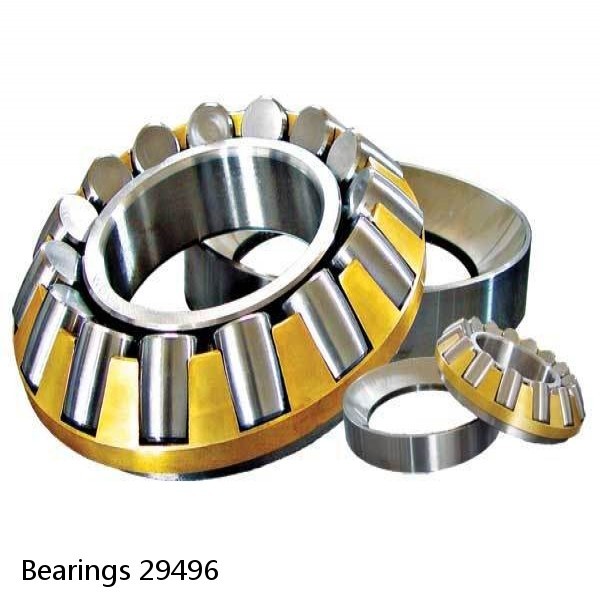 Bearings 29496
Bearings 29496 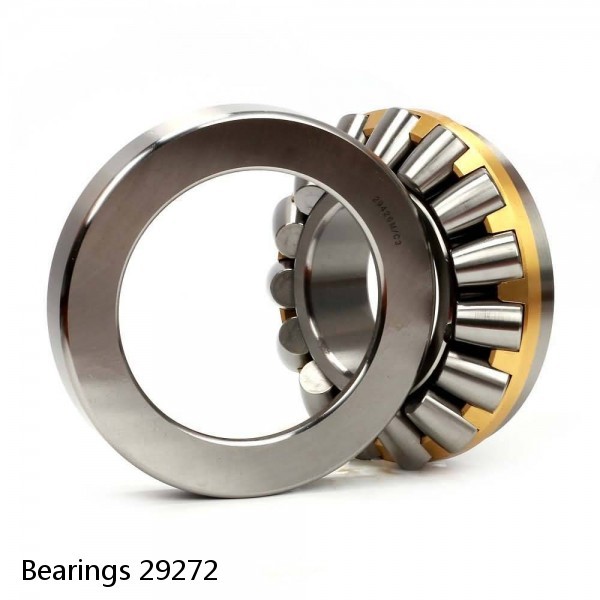 Bearings 29272
Bearings 29272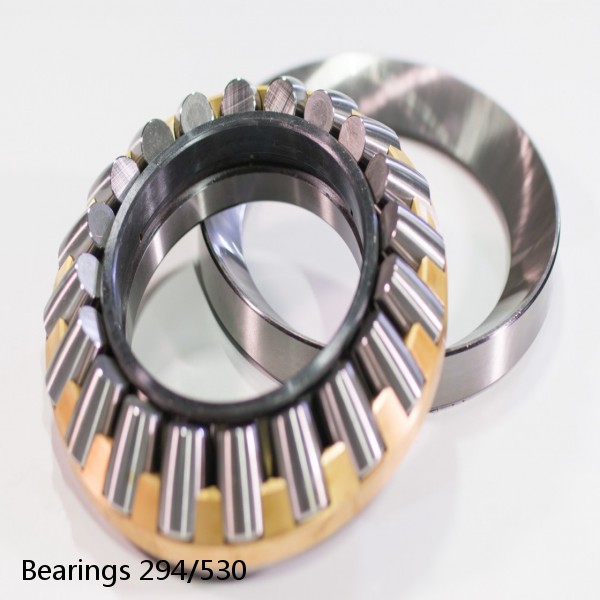 Bearings 294/530
Bearings 294/530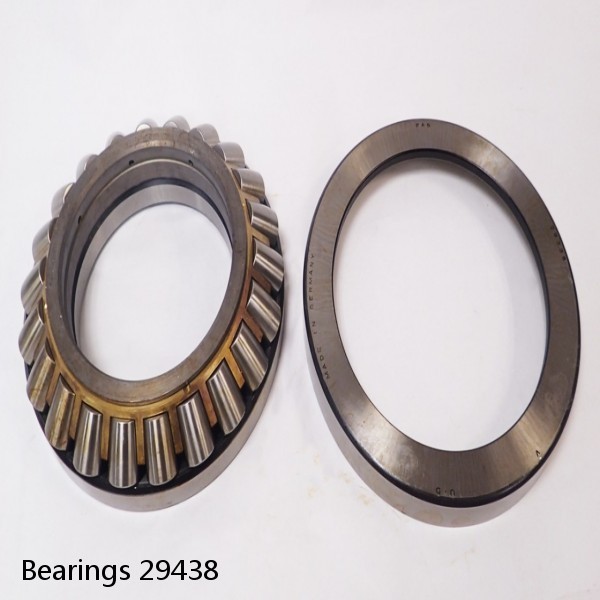 Bearings 29438
Bearings 29438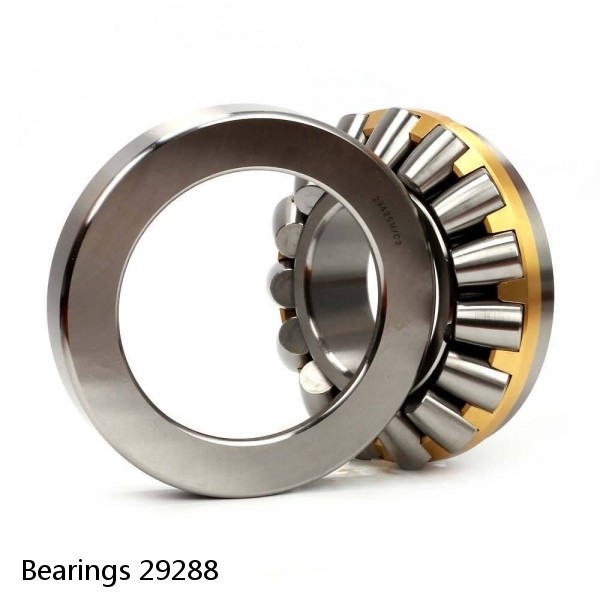 Bearings 29288
Bearings 29288